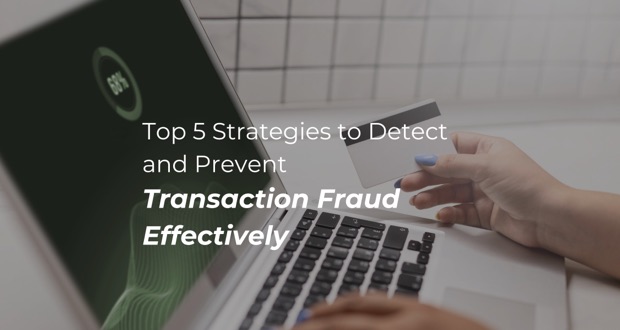What is Transaction Fraud?
Transaction fraud encompasses deceptive activities during financial transactions. It includes credit card fraud, identity theft, and unauthorized online payments. Fraudulent transactions can lead to financial losses, damaged reputations, and legal repercussions for businesses.
Importance of Detecting and Preventing Fraudulent Transactions
Detecting and preventing fraudulent transactions is crucial for businesses to maintain trust and credibility with their customers. Failure to address transaction fraud can lead to significant financial losses, legal repercussions, and a damaged reputation. In an era where digital transactions are increasingly prevalent, the ability to swiftly identify and mitigate fraud is more important than ever.
Impact of Fraud Transactions on Businesses
The impact of fraud transactions on businesses can be devastating. Financial losses from fraudulent transactions can be substantial, affecting the bottom line and potentially leading to bankruptcy for smaller enterprises. Beyond direct financial losses, businesses may also face increased operational costs due to the need for enhanced security measures and fraud investigation processes. Additionally, the reputational damage from a fraud incident can result in lost customers and diminished market trust, further exacerbating the financial and operational challenges.
1. Implement Advanced Fraud Detection Systems
Technological Innovations in Fraud Detection
Technological innovations, particularly in machine learning and AI-based systems, have revolutionized fraud detection. These advanced systems enable real-time analysis of vast transactional data, identifying anomalies and patterns indicative of fraudulent activities. The adaptive learning capabilities of these systems allow them to continuously evolve, adapting to new fraud tactics and improving detection accuracy over time. Furthermore, real-time monitoring and analytics play a pivotal role in fraud prevention. Immediate alerts generated by these systems enable businesses to detect and respond to suspicious activities as they occur, thereby preventing fraudulent transactions promptly. Additionally, behavioral analysis of user patterns helps identify deviations from normal transaction activity, further enhancing the ability to detect potential fraud.
By integrating these advanced technologies, businesses can significantly mitigate the risks associated with fraudulent transactions, ensuring financial stability, operational efficiency, and maintaining a trustworthy reputation among customers.
2. Utilize Multi-Layered Security Protocols
A multi-layered security approach is essential for safeguarding against fraud transactions. By combining various security measures, businesses can create robust defenses. Here are some key components:
Two-Factor Authentication (2FA)
One of the key components of this approach is Two-Factor Authentication (2FA). 2FA adds an extra layer of security beyond traditional passwords by requiring users to provide a second form of authentication, such as a text message code or a biometric scan, to access their accounts. This significantly reduces the risk of unauthorized access, even if passwords are compromised.
Encryption and Tokenization
Another vital component of a multi-layered security approach is the use of encryption and tokenization. Encryption involves converting sensitive data into a code to prevent unauthorized access. By using secure communication channels like HTTPS, businesses can ensure that data remains protected during transmission. Tokenization, on the other hand, replaces sensitive information, such as credit card numbers, with unique tokens. These tokens are meaningless to attackers if intercepted, thereby adding an additional layer of security.
By implementing these multi-layered security protocols, businesses can create a more secure environment that significantly reduces the risk of fraud. This comprehensive approach not only protects sensitive data but also enhances customer confidence, as they are assured that their information is safeguarded by multiple security measures.
3. Conduct Regular Risk Assessments
Importance of Risk Assessments
Conducting regular risk assessments is a fundamental practice for safeguarding against fraudulent transactions. These assessments are crucial because they help businesses identify vulnerabilities within their transaction processes, enabling them to proactively address potential weaknesses before they can be exploited. Moreover, as fraud tactics continually evolve, ongoing risk assessments ensure that security measures remain effective and up-to-date, allowing businesses to stay ahead of emerging threats.
Steps for Effective Risk Assessment
Effective risk assessment involves several key steps. First, regular audits and reviews are essential. Scheduled audits should be conducted periodically to examine transaction logs, access controls, and authorization processes. During these audits, businesses should look for unusual patterns or discrepancies that may indicate fraudulent activity. Identifying such anomalies early can prevent significant financial and reputational damage.
The second step involves updating security measures based on the findings from these assessments. Adaptability is crucial; businesses must use the results of their risk assessments to fine-tune existing security protocols. This might involve implementing new technologies, enhancing current systems, or revising policies to address identified vulnerabilities. Additionally, staying informed about industry trends and emerging threats is vital. By keeping up with the latest developments in fraud tactics and security technologies, businesses can continuously enhance their preventive measures, ensuring robust protection against fraud.
Incorporating regular risk assessments into a comprehensive security strategy not only helps in identifying and mitigating potential threats but also reinforces the overall resilience of a business's financial systems. This proactive approach fosters a secure environment, instilling confidence among customers and stakeholders that their transactions are protected against fraudulent activities.
4. Educate and Train Employees
Employee Training Programs
Educating and training employees is a critical component of preventing fraudulent transactions. By fostering awareness and vigilance, businesses can empower their staff to play an active role in fraud prevention. Employee training programs are essential because they ensure that employees are aware of the risks associated with transaction fraud and remain vigilant during their daily tasks. Educating employees about these risks helps them recognize signs of fraud, such as unusual patterns, suspicious behavior, and red flags, which are crucial for early detection and prevention.
Key Training Areas
Key training areas should focus on recognizing signs of fraudulent transactions and understanding what constitutes such activities. Employees should be trained to identify unauthorized access, suspicious account activity, and unusual payment requests. Training sessions can cover common fraud tactics, including phishing emails, social engineering, and account takeovers, to ensure that employees are well-equipped to spot potential threats. By understanding these tactics, employees can better protect themselves and the business from falling victim to fraud.
Another important aspect of employee training is reporting and responding to suspicious activities. Employees need clear guidelines on how to report any suspicious incidents promptly. Encouraging a proactive approach is vital; if something seems off, employees should feel empowered to escalate it to the appropriate channels without hesitation. This prompt reporting can prevent potential fraud from escalating and causing significant damage.
By investing in comprehensive employee education and training programs, businesses create a stronger defense against fraudulent transactions. Well-informed and vigilant employees act as an additional layer of security, enhancing the overall effectiveness of the company's fraud prevention measures. This proactive approach not only helps in mitigating risks but also fosters a culture of security awareness within the organization, ensuring that everyone plays a part in maintaining a secure environment. Stay informed and stay secure!
5. TrustDecision’s AI-Based Fraud Management
Real-Time Fraud Detection
TrustDecision's AI-based fraud management solution excels in real-time fraud detection, providing businesses with the capability to identify suspicious activities instantaneously. By leveraging advanced algorithms and real-time data analysis, TrustDecision can detect anomalies and potential fraudulent transactions as they happen. This immediate identification allows businesses to take swift action to prevent fraudulent transactions before they can cause any financial harm. The ability to monitor transactions in real-time is a game-changer in the fight against transaction fraud, ensuring that businesses can stay one step ahead of fraudsters.
Machine Learning Algorithms
One of the standout features of TrustDecision's fraud management solution is its use of machine learning algorithms. These algorithms continuously learn from transaction data, enhancing their ability to detect fraud transaction meaning and adapt to new fraud patterns. As fraudsters develop more sophisticated methods, the machine learning models evolve to recognize and counteract these new tactics. This continuous improvement in detection accuracy ensures that businesses are always equipped with the most effective tools to combat fraudulent transactions. By utilizing machine learning, TrustDecision provides a dynamic and adaptive approach to fraud detection, making it difficult for fraudsters to succeed.
Comprehensive Risk Scoring
This system assigns risk scores to transactions based on multiple factors, such as transaction amount, location, user behavior, and historical data. By evaluating these factors, the system can determine the likelihood of a transaction being fraudulent. This risk scoring enables businesses to make informed decisions quickly, allowing them to prioritize high-risk transactions for further investigation while streamlining the processing of low-risk transactions. The comprehensive risk scoring system not only enhances the efficiency of fraud detection but also helps businesses allocate their resources more effectively.
TrustDecision's AI-based fraud management solution offers a powerful and comprehensive approach to combating transaction fraud. With features like real-time fraud detection, machine learning algorithms, and comprehensive risk scoring, businesses can significantly enhance their ability to detect and prevent fraudulent transactions. By leveraging these advanced technologies, businesses can stay ahead of evolving fraud tactics, ensuring the security and integrity of their transaction processes.
Conclusion
In this expert blog, we explored five essential strategies for detecting and preventing transaction fraud. Here’s a recap:
Implement Advanced Fraud Detection Systems:
- Leverage machine learning and real-time monitoring to identify anomalies.
- Stay ahead of evolving fraud tactics.
Utilize Multi-Layered Security Protocols:
- Combine measures like two-factor authentication, encryption, and tokenization.
- Strengthen defenses against fraudulent transactions.
Conduct Regular Risk Assessments:
- Identify vulnerabilities in transaction processes.
- Adapt security measures based on assessment findings.
Educate and Train Employees:
- Raise awareness about fraud risks.
- Teach employees to recognize signs of fraud and report suspicious activities.
TrustDecision’s AI-Based Fraud Management:
- Real-time detection, machine learning, and risk scoring enhance security.














